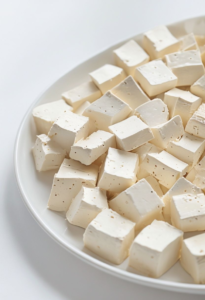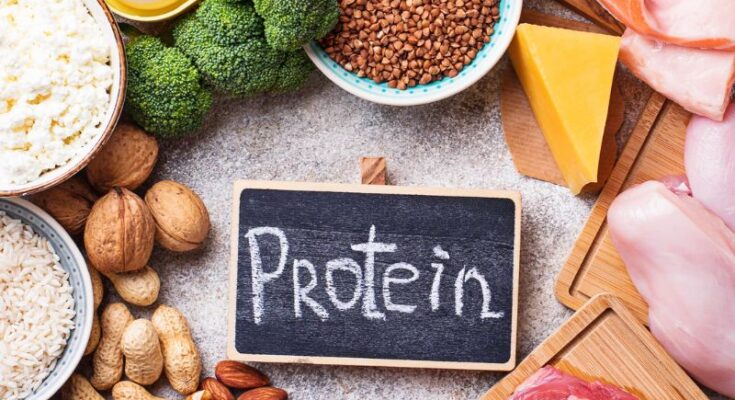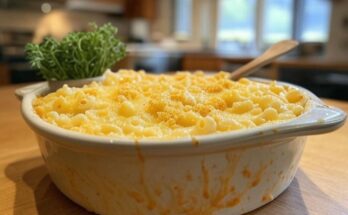Comprehensive List of High-Protein Foods (Plus Printable Guide!)
Are you looking to incorporate more protein into your diet? Whether you’re following a high-protein meal plan, trying to build muscle, or simply aiming for a balanced diet, knowing which foods are rich in protein can be a game changer. This high-protein foods list will make meal planning easier and ensure you get the nutrients you need.
Why Is Protein Important?
Protein is one of the most essential nutrients for our bodies. It serves as the building block of muscles, tissues, and enzymes and plays a crucial role in overall health. While our bodies naturally produce some amino acids (the fundamental components of protein), there are essential amino acids that we can only obtain from food. This is why a protein-rich diet is important for maintaining good health.

Health Benefits of Protein
Including adequate protein in your diet has several advantages:
- Supports Muscle Growth and Maintenance – Essential for those who work out or are losing weight.
- Keeps You Fuller Longer – Reduces hunger and prevents overeating.
- Aids in Weight Loss – Protein takes longer to digest, which helps burn more calories.
- Reduces Cravings – Helps curb late-night snacking and unnecessary food intake.
- Regulates Blood Pressure – Studies suggest that higher protein intake may help lower blood pressure.
How Much Protein Do You Need?
According to the Mayo Clinic, the minimum recommended intake is about 50 grams per day, but this can range between 50 and 100 grams, depending on factors like:
- Age and gender
- Body weight
- Activity level
- Health goals (muscle gain, fat loss, or maintenance)
For instance, someone who engages in heavy weightlifting or endurance sports may need more protein than the average person. As a long-distance runner, I personally aim for around 100 grams of protein daily, while also ensuring I consume enough carbohydrates for energy.
Best Sources of Protein
There isn’t a single “best” source of protein, but some foods are naturally richer in protein than others. Here’s a breakdown of the top high-protein foods:

Animal-Based Protein Sources (Low-Carb, High-Protein)
- Lean Meats: Chicken breast, turkey, lean beef, lean pork
- Fish & Seafood: Salmon, tuna, cod, shrimp
- Eggs & Dairy: Greek yogurt, cottage cheese, milk, cheese
- Other: Low-fat deli meats, canned light tuna
Animal-based proteins tend to be high in protein and low in carbohydrates, making them a great choice for those following a low-carb or keto diet.
Plant-Based Protein Sources
- Legumes: Beans, lentils, chickpeas
- Soy-Based: Tofu, tempeh, edamame
- Whole Grains: Quinoa, brown rice, whole wheat bread, oats
- Nuts & Seeds: Almonds, peanuts, chia seeds, sunflower seeds
- Nut Butters: Peanut butter, almond butter (high in fat but contains protein)
Plant-based proteins often contain more carbohydrates than animal-based proteins, but they’re still a great source of nutrients, especially for vegans and vegetarians. If you follow a plant-based diet, incorporating beans or lentils daily can help boost your protein intake.

What About High-Protein Processed Foods?
With the rising popularity of high-protein diets, many grocery stores now stock protein-enriched foods, such as:
- Protein Bars
- Protein Chips
- Protein Shakes & Powders
- High-Protein Cereal & Snacks
While these protein-enhanced products can be helpful for boosting intake, they may be expensive and often contain added ingredients like sugar, artificial flavors, and preservatives. If you use protein supplements, opt for natural, whole-food sources first and use shakes or powders as a supplement rather than a primary protein source.
Personally, I use plant-based protein powder instead of whey protein, as it’s easier on my stomach. However, if you tolerate dairy, whey protein is an excellent option.

Conclusion
Eating enough protein doesn’t have to be complicated. Whether you prefer animal-based or plant-based options, there are plenty of ways to get protein into your diet.
💡 Pro Tip: If you’re just getting started with increasing your protein intake, try adding one high-protein food to every meal and keep a few high-protein snacks on hand.
👉 Want an easy way to track your protein intake? Download our free High-Protein Foods Printable Sheet!



